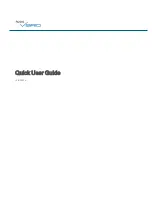
20
FIGURE 13: Bump Testing (Chlorine Gas Example)
F.
Modbus
Communication:
Modbus RS-485 communication. The GA-180 is equipped for remote display and communication
using the modbus RS-485 standard. To do this, you must defi ne the node, baud rate and parity
of the system. For more information on how to setup modbus refer to the Modbus Installation
and Instruction manual. The Modbus Installation manual can be downloaded from the Hydro
Instruments website (www.hydroinstruments.com). Printed copies are available upon request.
G.
Bump
Testing
To verify responsiveness, the gas sensors can be bump tested (exposed to a small amount of the
target gas) in order to test the reaction of the sensor. A plastic squeeze bottle is provided with each
gas detector for this purpose (Figure 13). It is suggested that bump testing be done at quarterly
intervals, however required frequency is determined by environment, conditions, number of and
severity of leaks. Proper bump testing will not substantially degrade the sensor or shorten sensor
life. Figure 13 diagrams a bump testing procedure for chlorine gas. Contact Hydro Instruments for
other bump testing procedures should the sensor be for something other than chlorine gas.
Gas
Fumes
Gas
Liquid
For Chlorine sensors
bottle contains 2 parts
NaClO solution (bleach)
and 1 part vinegar
WARNING:
Do NOT
allow the liquid solution
to directly contact the
sensor membrane.
Bump Test Bottle
GAS SENSOR
1 (888) 38-HYDRO
www.hydroinstruments.com
GAS SENSOR




































